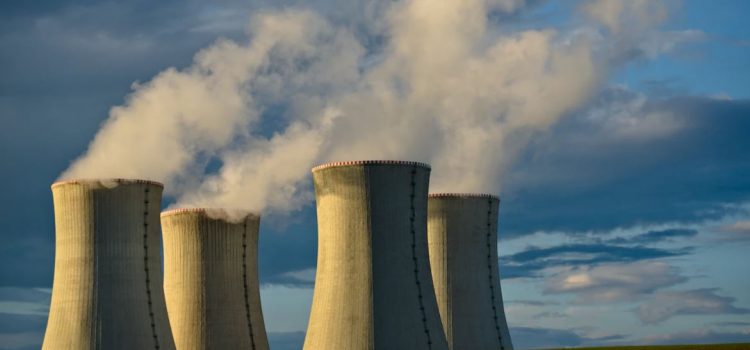
This is a free excerpt from one of Shortform’s Articles. We give you all the important information you need to know about current events and more.
Don't miss out on the whole story. Sign up for a free trial here .
Should the United States adopt nuclear power as a source of sustainable energy? What are the pros of nuclear energy?
Nuclear energy is getting renewed attention worldwide as a potential answer to two pressing problems: energy supply disruption by Russia and worsening climate change from fossil fuels. But it remains an especially divisive topic in the United States.
Let’s take a closer look at the pros of nuclear power.
The Energy Crunch Renews Nuclear Debate
Supporters of nuclear power argue that, with our current technology, it’s the most efficient and most reliable source of clean energy available. As such, increasing our reliance on nuclear power—replacing “dirty” energy sources like coal and natural gas—is our best option to produce sufficient energy and fight accelerating climate change.
Here are some of the pros of nuclear power.
1. Nuclear Energy Is Our Best Option to Combat Climate Change
Supporters of nuclear energy argue that it’s our best chance—and perhaps our only chance—to meet our energy needs while staving off the worst effects of climate change. Nuclear power produces a tiny fraction of the greenhouse gases that fossil fuels do, so increasing our reliance on nuclear energy (thereby reducing our reliance on fossil fuels) will have enormous environmental benefits.
Renewable energy sources such as solar, wind, and hydroelectric power are still a long way from being reliable and sustainable enough to power the U.S. The main problem is that their fuel sources—wind and sun—are intermittent, while a nuclear plant can run 24 hours a day. For example, the U.S. Office of Nuclear Energy estimates that it would take four 1-gigawatt solar plants to equal the output of a single 1-gigawatt nuclear plant.
So, even if we went all-in on these green energy sources, we’d have to supplement them with other energy sources like natural gas and coal. That means we’d still be pumping large amounts of greenhouse gasses into the atmosphere.
Finally, advocates of nuclear energy address the possibility of another Chernobyl-level disaster by arguing that, even if that extremely unlikely worst-case scenario happens, it’s still preferable to the damage that climate change will cause.
2. Statistically, Nuclear Power Is One of the Safest Options
Nuclear power has a much lower death rate than other energy sources like coal, oil, and natural gas; according to the World Health Organization (WHO), even the Fukushima disaster had minimal consequences. In fact, the next safest option—natural gas—has a death rate 40 times that of nuclear power. These rates include both industry workers (miners, power plant employees, and so on) and customers.
Pro-nuclear advocates also point out that there are some issues with the best-known risk studies, such as Dr. Engler’s, which estimated a 49% chance of nuclear disaster before 2050. First of all, Engler says in the introduction that the estimated chance of a severe nuclear accident is based on “patchy and limited empirical data”; in other words, there haven’t been enough incidents to give a solid foundation for predictions.
Second, safety precautions for nuclear reactors are much more stringent than they were in the past, and they involve multiple redundant failsafes. This means, even in the unlikely event that one layer of protection fails, there are numerous others protecting the reactor and containing the nuclear material. In other words, historical data won’t give an accurate estimate of future problems—for comparison, imagine trying to guess how deadly car accidents are based on data from 50 years ago and ignoring all the improved safety features we have today.
Finally, regarding the risk of a deliberate attack on a nuclear reactor, consider that the U.S. alone has 83 nuclear-powered warships in its navy. In a combined 5,700 years of operation, no attack or accident has ever caused one of those reactors to melt down.
In fact, the closest the world has come to this situation is the ongoing situation in Ukraine, where Russian troops captured the Zaporizhzhia nuclear power plant and converted it into a military installation. Russians have held the station since March, and so far there has not been a nuclear accident—although experts fear that Zaporizhzhia is not getting the maintenance it needs, and warn that there may be an incident soon.
3. It Doesn’t Create as Much Hazardous Waste as You Might Think
Nuclear plants produce less waste than you might imagine. The World Nuclear Association says that a typical 1-gigawatt nuclear plant only produces three cubic meters (about 106 cubic feet) of hazardous waste per year, while meeting the energy needs of over a million people.
For comparison, producing the same amount of energy with coal power would create about 330,000 tons of ash. Solar energy also produces significant quantities of highly toxic waste—not during use, but during the manufacture of solar panels and when the panels are eventually disposed of.
Some scientists are also working on ways to eliminate nuclear waste much more quickly than waiting for it to decay naturally. One Nobel Prize winner says that, within 15 years, we’ll have the technology to break down radioactive waste in a matter of hours.
What’s Next?
Where the U.S. goes from here is a complicated question, and it’s the subject of a great deal of debate. In 2018, nuclear power provided about a quarter of all clean energy worldwide—it was outperformed only by hydroelectric power, which provided about half.
However, the use of nuclear power is declining, even as energy consumption continues to rise. Nuclear proponents say that we must redouble our investments into nuclear power, while opponents say that we should phase it out in favor of renewables like wind, solar, and hydropower.
There is a third option: Some experts say that a comprehensive energy strategy must include both nuclear power and renewables, and suggest temporarily relying on nuclear power to both meet our needs and protect the environment while we continue to advance renewable technology. Then, once non-nuclear energy sources can reliably meet our energy needs, we would phase out nuclear in favor of those safer options.
Do you think the United States should adopt nuclear energy? Let us know in the comments.

Want to fast-track your learning? With Shortform, you’ll gain insights you won't find anywhere else .
Here's what you’ll get when you sign up for Shortform :
- Complicated ideas explained in simple and concise ways
- Smart analysis that connects what you’re reading to other key concepts
- Writing with zero fluff because we know how important your time is






